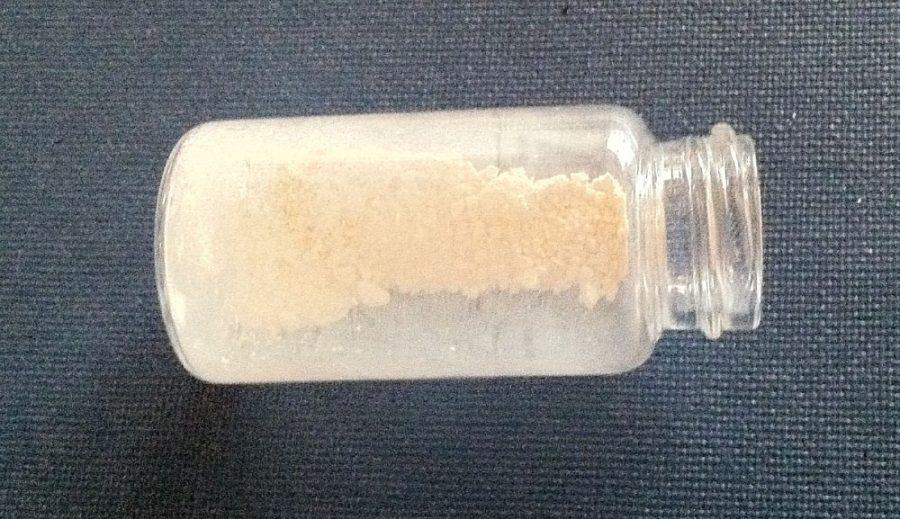Chemists at the University of Arizona have developed a new, long-lasting sunscreen that won’t break down or absorb into your skin.
“We’re the first to develop a polymeric sunscreen material,” said Ravindu Nanayakkara, a graduate student in chemistry and researcher involved with the project. “We expect this [sunscreen] will have a longer lifetime compared to the commercial sunscreens on the market.”
The new sunscreen is made of solid polymers, which won’t penetrate the skin or dissolve into radicals when exposed to ultraviolet rays.
Most commercial sunscreens available today contain organic chemicals, such as avobenzones and benzophenones, said Douglas Loy, the lead researcher on the project and a professor of materials science, engineering, chemistry and biochemistry.
These organic chemicals can cross through your skin and dissolve in fatty tissue. Once these molecules are hit by ultraviolet light, they enter into an excited state and begin to degrade into radicals within your body, Loy said.
RELATED: UA research team works to cure memory loss in heart bypass patients
Radicals are molecules that can be harmful when present in your body. They can cause skin thinning, which is a cause of skin cancer and DNA and protein damage, according to Loy.
“I always found that was appalling, that yes, [these sunscreens] are preventing UV rays from directly interacting with the body, but you’re still generating these radical species,” Loy said. “So we thought it would be a really good idea not to have them cross over.”
One of the main ingredients in the new polymeric sunscreen is curcumin, a natural mineral derived from the spice turmeric, Nanayakkara said. Curcumin is also cheaper than the benzophenones.
The decision to use a natural, biologically friendly mineral was born from a concern that the polymers in the sunscreen would remain solid and persist in the environment, Loy said.
Solid polymers slow down the rate at which radicals form bonds, which extends the lifetime of this sunscreen to three times as long as commercial sunscreens.
Loy said most people assume the reason the sunscreen bottle says ‘reapply every two hours’ is because it gets washed off by sweat or contact. Unfortunately, this isn’t the case.
“We measured the photodegradation of the sunscreens over time, using commercial sunscreens as control experiments, and we were amazed at how fast it actually degrades,” Loy said. “In two hours, your sunscreen is gone; it’s converted into radicals.”

The original idea for the sunscreen came from Stephanie Tolbert, a graduate student working in Loy’s lab. She had the idea while creating fluorescent particles that could be used for leak tests. The particles were absorbing UV light as part of the fluorescence reaction and turning it into visible light, a process that could also be applied to sunscreen, according to Loy.
Tolbert’s work was the first of its kind in this area. Currently, their only competitor is UV Pearls, which are filled with liquid sunscreen that leaks out over time, Loy said.
“It’s like the first people on a new continent,” Loy said, speaking of his students’ trailblazing work. “Everything you do is new and different, and the work that Ravi and Stephanie have done is kind of that caliber, the kind of ‘go where no one has gone before’ kind of thing.”
RELATED: Encryption Explained
While the first formulation of the sunscreen containing curcumin was a success, the lab continues to work on improving their design. Nanayakkara is now working on his fifth formulation of the sunscreen, a tetrazine-based material with antioxidant properties.
“This [will] be a solid material that sits on top of the skin, unlike the liquid material that can seep through,” Nanayakkara said. “It [will] just sit on the skin and not penetrate through, so there’s no adverse effects from chemical exposure.”
Both Loy and Nanayakkara are excited about the prospects of the tetrazine sunscreen, which is not only cheaper but also easier to formulate. According to Nanayakkara, the tetrazine is a very strong absorber of UV rays.
The sunscreen currently rates at a sun protection factor, or SPF, of 50, Loy said.
To determine the SPF, the sunscreen is placed on a quartz slide and exposed to a solar simulator for varying degrees of time to produce a UV absorption profile. When the sunscreen starts to degrade, more UV begins to leak through, Nanayakkara said.
The sunscreen was recently licensed to MexiAloe Laboratories with the support of Tech Launch Arizona, a UA program that helps bring university research into the commercial market.
“Tech Launch Arizona has been very supportive and amazingly helpful at providing resources to answer questions in the laboratory that people might have about the product,” Loy said.
While the tetrazine sunscreen is still in the process of being tested, it will eventually be formulated into a cream that can be easily applied and sold on the commercial market.









